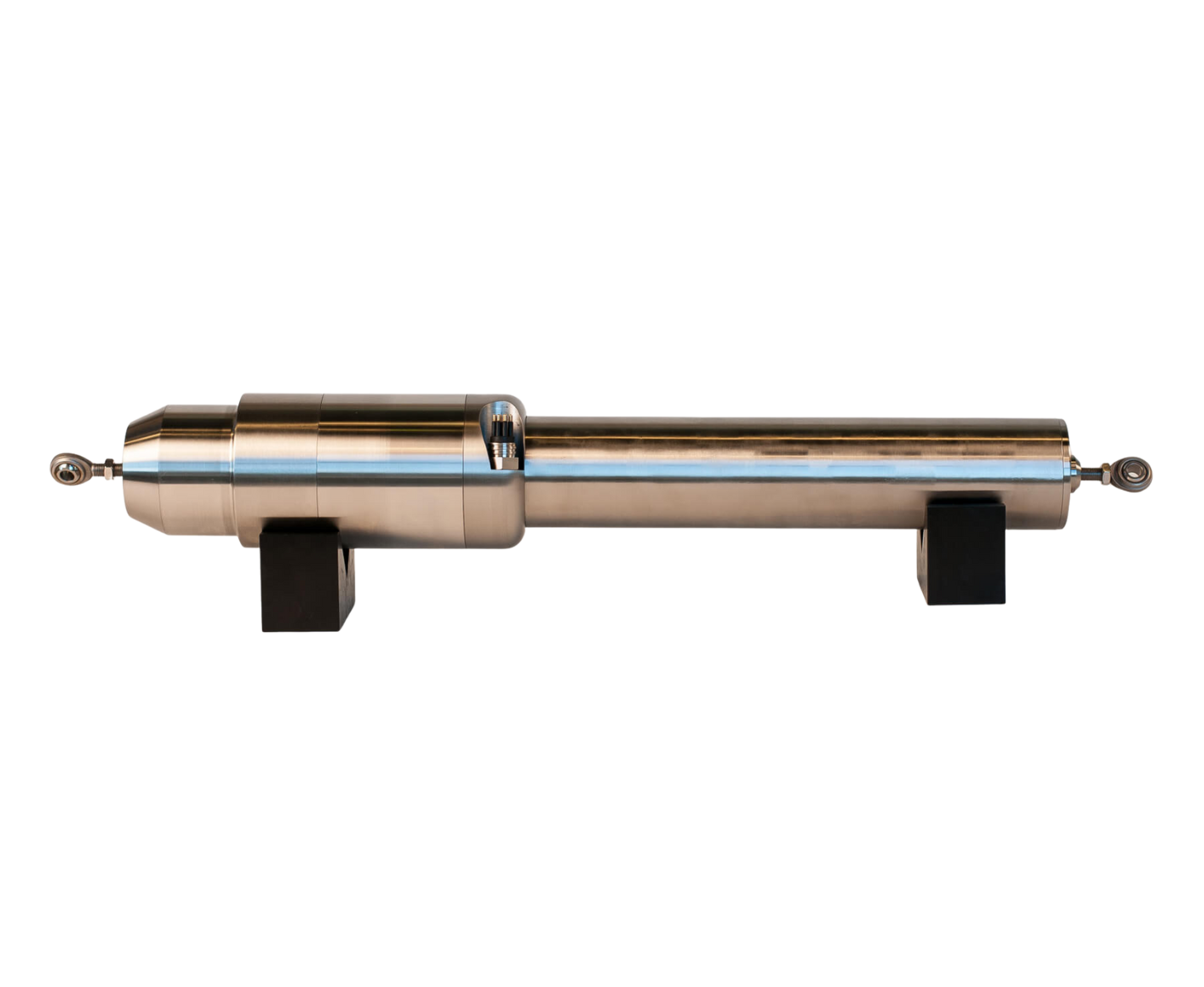The 4000 Series Subsea Linear Actuator from 2G Engineering is the largest and most powerful model in our subsea actuator lineup. It includes all the integrated features found in our 2000 and 3000 Series units, such as onboard motor drivers, position sensors, and a servo control system. As a result, it delivers precise, reliable performance even in extreme underwater conditions.
Robust and high-performance design
The 4000 Series Subsea Linear Actuator delivers up to 2000 pounds of output force in both tension and compression. In addition, it operates at a nominal 24 volts and supports both serial and analog control systems for flexible integration.
Each unit measures 4 inches in outer diameter, includes an onboard compensator system, and is rated for depths of up to 10,000 feet. Therefore, it provides consistent performance even under high-pressure deep-sea environments.
Flexible product configuration
To meet diverse project requirements, the 4000 Series Subsea Linear Actuator offers multiple configuration options:
-
Stroke lengths of 5″, 6″, 8″, 14″, and larger (units above 14″ require an external compensator)
-
Optional operating voltage range from 10 to 400 V
-
Material options: 6061 aluminum, 316 stainless steel, or Grade 5 titanium
-
Custom motor windings optimized for torque or speed
-
Multiple rod-end configurations available
Moreover, these options allow engineers to tailor the actuator to specific mechanical, electrical, and environmental needs.
Key applications
The solution is ideal for a wide range of underwater applications. For instance, it can be used for:
-
Wing and rudder control
-
Latch or release systems
-
Mast or sensor deployment
-
Replacement for hydraulic cylinders
Ultimately, this actuator provides a dependable and efficient alternative to hydraulic systems, ensuring smoother, cleaner, and more precise motion control under pressure.
A reliable deep-sea solution
By combining strength, control, and versatility, the 4000 Series Subsea Linear Actuator delivers unmatched performance for demanding subsea engineering applications. In summary, it stands as the preferred choice for projects requiring maximum output force, deep-water capability, and long-term reliability.

